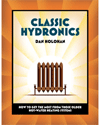The sky is falling…The sky is falling…Or is it?

Recently we received an e-mail from an anxious acquaintance. He recommended short selling all investments and sitting on the sidelines as the U.S. and global economies were slated to go through one of the worst economic fall-outs in the history of the industrialized world.
Our friend was clearly in a panic. It’s time to put things in perspective.
2007 was a difficult year. The new residential construction market in the U.S. crashed and the sub-prime mess started to unravel. During the previous five years the residential real estate market had been booming at an unprecedented rate and the market was awash in exuberance. In the first half of this decade, the real estate market had evolved into a “Greed Estate” market.
Gone were the days when the home was considered the bedrock of the American family. Instead, the American home had become a poker chip, and more people were betting on ever-rising returns as a get-rich-quick scheme of the new millennium. Banks and other mortgage lenders were eager to join in and developed creative ways to finance the “Greed Estate” mentality.
But markets go up and go down. That is a law of economics and the housing market obeys it. It was only a matter of time before “Greed Estate” would run its course and the market would correct.
A few years ago at the American Enterprise Institute Alan Greenspan asked, “How do we know when irrational exuberance has unduly escalated asset values, which then become subject to unexpected and prolonged contractions as they have in Japan over the past decade?” No one listened, or no one understood. The market continued to charge forward until March 10, 2002, when the tech stock bubble burst and billions of dollars were squandered.
We were similarly suffering in the real estate market from irrational exuberance. With so many houses being built and speculators flipping them before they were occupied, we were living on borrowed time. Last year “Greed Estate” proved to be all smoke and mirrors and real estate came back into focus.
While it is not our intent to diminish the effects of the softening housing market, we want to put it into perspective and show how the crash could have been predicted and possibly avoided. In addition, we wish to show the overall effect the housing correction has had on the kitchen and bath market, and what we believe is a realistic and sustainable growth scenario for the forthcoming years.
The Making Of A Perfect Storm
At BRG Consult, we believe the softening of the housing market in 2007 was predictable. There was exceptional speculative trading in commodities (flipping), abundant financing made available to allow the speculative trading (sub-prime mortgages), and an excessive amount of market optimism. When these three attributes are present, the market gets skewed.In addition, we believe the 2007 softening is part of an overall market cycle that becomes visible when we examine how the U.S. economy has grown over the last 40 years.
Chart 1 (see below) gives an overview of the housing starts in the U.S. since 1960.
This chart shows that the U.S. economy has been able to sustain a new residential construction market of 1.57 million houses per year for the last 46 years. When the market is bullish and exceeds the 1.57 million houses per year threshold, inevitably a correction takes place in subsequent years. As the chart shows, the market has never corrected below the 1 million threshold. Over the past 46 years, whenever it approached the 1 million level, the market has rebounded and entered into a prolonged period of growth.
In every decade since 1960 we have seen the residential market go through a boom and a bust cycle. In the 1960s and the 1970s the market went through two such cycles in each of the decades, with the boom markets being considerably longer than the bust cycles.
In the 1980s the market started soft and gradually built momentum for four years. Then it corrected itself again and entered into a prolonged period of market corrections.
In 1991 the U.S. economy entered into the most recent and longest building boom this country has experienced. For the next 14 years, from 1991 to 2005, the construction market continued to build momentum. In 1998 and 1999 the market gave first indications of overheating and a minor correction took place in the year 2000. From 2001 until 2005 we were living in the period of “Greed Estate,” where it appeared the market could only go up.
The market peaked mid-year of 2005 and started softening in 2006. Ultimately it corrected in 2007.
In the making of the perfect storm, a few things were happening that strongly influenced the U.S. economy. While inflation was kept in check during this boom, the prime rate was experiencing a wide fluctuation. In 1991 at the start of the building boom, the prime rate was cut to 8.46%. In 1992 the rate was further cut to 6.25% and in 1992 the rates were lowered again to 6%. Rates actually started climbing again in 1994 and by the year 2000, the year of the minor housing market correction, interest rates had climbed back to 9.23%.
In order to fuel the economy, the Federal Reserve cut rates in 2001 to 6.92%. In 2002 the rates continued to fall and by 2003 the prime rate was at 4.12%, the lowest it had ever been for the last 46 years. On June 30, 2004, amid signs of a strengthening economy and lessening worries of deflation, the Federal Reserve raised interest rates. Over a two-year period, interest rates continued to inch upward. By mid-year 2006 interest rates had almost doubled to 8.05%.
The rising prime rate should have sounded alarm bells. The market was being staged for a correction. But with sale prices going through the roof, the sound of the cash register was more alluring than the warnings.
Another indicator of a market correction was the rising price of oil. In 1998 the cost of a barrel of oil hovered around $15. As the U.S. economy was heating up, the Chinese economy was going through an industrial revolution and experiencing explosive growth. Today, the Chinese economy is the second largest in the world with a GDP of $10.2 trillion.
The two largest world economies were showing robust growth at the same time for an extended period. Both economies are oil dependent and both are large-scale importers of oil. With the Middle East in a prolonged period of instability, and Venezuela under the rule of a new dictator, the oil supply became constrained and consequently prices rose.
Today the price of crude oil is close to $100 per barrel. As the price of oil rose, warning bells went unheeded.
With several years of new construction exceeding the sustainable level of 1.57 million new homes per year, with prime rate interest rates doubling in two years and the cost of crude oil skyrocketing, the making of the perfect storm was complete. In 2007 these forces collided and the market crashed. Over-leveraged consumers suddenly found themselves strapped for cash. Adjustable mortgages started adjusting upward, increasing the pressure on the American consumer. With oil prices rising to levels not seen since the 1973 OPEC oil embargo, basic necessities started to get more expensive. With money tight and too many bills to pay, homeowners began to delay or miss mortgage payments.
As the market started to retract, many homeowners found their debt on the home was greater than the actual value of the property. Foreclosures became more prevalent around the country. Builders were awash with properties that would not sell, and were forced to auction off or fire sale their inventory. With a surplus of unoccupied houses on the market, builders put future developments on hold, until the oversupply had been weaned.
The Softening Of The U.S. Housing Market And Its Impact On The U.S. Plumbing Industry
As of the end of the third quarter 2007, the U.S. GDP was growing at a 4.9% annual rate. The softening of the U.S. housing market resulted in an anemic growth of 0.6% in the fourth quarter. While the first three quarters signaled a robust economy, the cooling off at the end resulted in year-over-year GDP growth of 2.2% vs. 2006.BRG Consult noticed the correction taking its toll on the U.S. plumbing industry across all product categories. While new construction was down by about 20% for the year, repair and remodeling remained constant. Interestingly, new commercial construction, especially green build construction, was up 17% in 2007. The repair/remodeling and commercial construction markets offset much of the negative impact from the housing slump.
BRG Consult estimated the total U.S. market for bathroom plumbing products (bathtubs, showering products, vitreous china and fire clay products, faucets, taps and mixers, whirlpools and air massage baths) sold from all of the manufacturers to distribution totaled $7.8 billion in 2007.
In 2006, the U.S. bathroom plumbing products market was estimated at $8.8 billion. The overall market receded by $1 billion or by 11.4 %. This trend is expected to continue in 2008.
Chart 2 (see below) gives a comparison of the U.S. bathroom plumbing products market from 2006 to 2007.
The U.S. Bathroom Plumbing Product Market By Category
In 2007, about 2 million bathtubs were sold in the U.S., representing a market value of approximately $455.5 million. This market includes cast iron, acrylic, SMC/Vikrell, gel-coat and enameled steel tubs. Enameled steel tubs represent about 50% of the total unit volume.
Of the total volume, 51% was sold to the new residential construction market. In 2007, the bathtub market was down by 14.4%. Steel baths and gel-coat baths suffered the hardest from the slide, as these two bathtub categories are mainly sold into the opening price segments of the new construction market.
The acrylic and cast iron bath market saw a softening by 11%, mainly because the upscale housing market was less affected by the weakening housing market, and because the hospitality market remained robust throughout 2007.
In 2007, the total U.S. market for vitreous china was estimated at 34.6 million pieces, representing a market value of $1.8 billion. This market includes one-piece toilets, toilet bowls, toilet tanks, wall-hung toilets, spud bowls, self-rimming lavatories, under-mount lavatories, wall-hung lavs, pedestal lavs, urinals, bidets and service sinks.
Of the total volume, 45% was sold into new construction. The U.S. market - in contrast to Europe and Asia - remains a floor-mounted two-piece toilet market. About 13 million toilets were sold in 2007, 87% of which were floor-mounted two-piece toilets, while the remaining 13% included one-piece toilets, wall-hung toilets and spud bowls.
The second largest segment within the vitreous china and fire clay product category was the various lavatory types. In 2007, roughly 9 million lavatories were sold: 45% were self-rimming lavatories, 23% were wall-hung lavs, and the remainder was split between pedestal and under-mount lavatories.
Because of the softening of the new residential market, BRG Consult saw this market retract by 13.7% in 2007.
In 2007, an estimated 47.8 million brass pieces were sold, representing a market of $3.7 billion. This market segment contains kitchen faucets, bathroom faucets, roman tub fillers, tub/shower mixers, shower-only mixers, showerheads, tub spouts, pressure-balancing valves and thermostatic valves. The majority of the products were not sold into new construction, but rather into the repair/remodeling market. New construction consumed 38% of the volume sold. Approximately 41% of the product volume was sold through the D-I-Y home center channel.
The estimated sales breakdown by type of faucet for 2007 includes: 14.2 million kitchen faucets; 17.8 million bathroom faucets; 3.3 million roman tub fillers; 3 million tub/shower mixers; and 1.5 million shower-only mixers. The U.S. market remains a pressure-balancing market, although thermostatic valves are increasingly gaining in importance - especially in the high-end market segments.
The softening of the new housing construction market in 2007 resulted in a net reduction of the faucet, taps and mixer market by 8% vs. 2006.
In 2007, the U.S. showering market was estimated at $1.3 billion. This market includes shower modules, integrated bath/shower modules, shower trays, shower screens, shower doors, shower enclosures and shower kits. It does not include hydrotherapy cubicles, which are captured in the hydrotherapy market segment.
The shower module, integrated bath/shower module and shower tray market receded by 18% in 2007. This sector was strongly affected by the downturn in new residential construction, as these products are mainly sold to the opening price point and mid-range income levels and are chiefly used in spec and tract homes.
The shower screen, shower door, shower enclosure and shower kit market was down by 12%, mainly because these products typically cater to the mid-range and higher priced custom-built homes.
The hydrotherapy market includes whirlpool baths (jetted water), air massage baths, hydrotherapy cubicles and jetted performance showering systems, representing a total market value of $821 million. These products tend to be higher priced and are aimed at the custom-home market. Repair/remodeling accounts for 45% of the volume sold, while only 29% is sold to new construction, with the remaining 26% sold into the hospitality industry. Due to its unique price positioning and the usage of this product category, it was the least affected by the slowdown in the new residential construction market, with 2007 being about 4% less than 2006 values.
Market Outlook - No, The Sky Is Not Falling
The overall U.S. economy slowed down in the fourth quarter of 2007 mainly due to the softening of the new residential construction market and the worsening of the financial sector. The repair/remodeling construction segment was stable and new commercial construction was growing. Orders for durable consumer goods expanded in December. Exports remained strong throughout 2007 and the farm sector was very healthy. These are all positive economic indicators. And if the performance of the U.S. economy over the last 47 years is any indication of the future, the economy will exit its correction period after a relatively short time.In the most recent December Business Roundtable - a survey of 160 CEOs managing the largest U.S. companies - on the health of the U.S. economy, the consensus expressed an uptick in optimism and projected the economy would expand in 2008. The biggest mistake companies can make is to overreact to market fluctuations and pull back or abandon well-laid-out growth plans. Instead, when the market turns soft, extra emphasis has to be put on execution. Plan your work, then work your plan.
Here are a few points worth considering:
1. The U.S. produced roughly $14 trillion worth of goods and services in 2007, making it easily the largest economy in the world. The country’s GDP - the output of goods and services produced by labor and property located in the U.S. - increased at an annual rate of 2.2% in 2007. This was only slightly below the 2.9% growth rate reported in 2006.
2. For 52 months in a row (ended as this was written in January 2008), the U.S. economy enjoyed the longest uninterrupted period of job growth on record.
3. Unemployment was at 4.6% as of this writing - the third lowest rate since 1970.
4. Inflation was at a historic low of 2.85%.
5. Prime rates have been cut and all indications are that the Federal Reserve will cut rates again in the near future.
6. The outlook for oil supply and demand fundamentals over the next two years points to an easing of the oil market balance in 2009. High non-OPEC production and planned additions to OPEC capacity should more than offset expected moderate world oil demand growth and relieve some of the tightness in the market.
7. As an interesting side note, in the last five years Canada has been catapulted to the highest rank of oil-producing nations. Based on data samples from 56,000 wells and 6,000 core samples, the Energy and Utilities Board of Canada has estimated the oil sands in northern Alberta contain 175 billion barrels of oil. This amount of oil is enough to cover U.S. consumption for the next 50 years. Canada has quietly slipped into second place behind Saudi Arabia’s 256 billion barrels of oil and ahead of Iran and Iraq.
Virtually every major company in the Western world has picked up a piece of the action, investing nearly $90 billion to create the biggest industrial project on earth and propel Canada into the status of emerging energy superpower. With all of the geopolitical uncertainties that the world of energy faces, it is of immeasurable value to have vast resources nearby, in a country and government with whom the U.S. is very close.
Forecasts For The Plumbing Industry
In general, we believe the market correction will continue through the first part of 2008. The new residential construction market should start to show normal growth starting around the time you read this in the March/April time frame, and should grow, seasonally adjusted, until the eve of the presidential elections.At that time, we believe the market will go into a “wait-and-see” mode to determine what type of changes the pending elections will bring.
Repair and remodeling will continue to fare well in this economy. When new residential construction softens, contractors focus more on completing repair/remodeling projects. The commercial construction market will continue to be strong, especially new green build projects.
New construction for green commercial buildings is expected to grow by 18% in 2008. This market segment is currently around $1.4 billion and is expected to double by 2011.
Green is no longer a fashion trend. It is becoming more the norm than the exception, and customers are willing to pay a premium for ecological solutions.
At BRG Consult, we believe the ongoing consolidation in the professional wholesale market will continue. Soft economies typically are acquisition periods for companies. Companies that are distressed due to the economic softening become acquisition targets for companies that fared well or were in a general growth phase.
Almost on cue, in January of 2008 the industry reported an increase in mergers and acquisitions. Manufacturers grew through acquisition, distribution companies (both wholesale and retail) announced mergers and contractors were consolidated.
Further along the lines of consolidation, distribution and manufacturing companies will sharpen their pencils and streamline their product offerings. Distribution will eliminate duplication wherever possible and focus on profit maximization by supporting a limited number of SKUs. Wholesalers will not be able to afford carrying multiple lines with overlapping product offerings. As 2008 progresses, we believe many of the distributor partners will pare down their offering to a select few recognized brands for the luxury and mid-range price segments and one line for the opening price point.
In addition, we believe distribution will continue its emphasis on better overall logistics with higher inventory turns. At BRG Consult we also believe the recent emergence of e-commerce within the plumbing industry will increase. E-commerce today represents approximately 5% of total sales. As contractors and end consumers become more comfortable with the Internet, the trend towards more e-commerce is inevitable.
For manufacturers, market growth will become regionalized. As certain areas of the country will be soft, other markets will expand. Manufacturers will need to monitor the micro developments and adjust their marketing strategies accordingly. Product lines will need to be reviewed. During growth periods, it is relatively common to expand product offerings. With a softening of markets, however, manufacturers need to review the profitability of their product lines and scale back or drop lines accordingly.
As the distribution partners move to pare down their SKU count, manufacturers will need to fine-tune their marketing message and emphasize those features that make their products stand out from the rest.
Contractors will shift their attention towards the repair/remodeling and the commercial markets. They will seek products that give the best overall return and require the least amount of after-installation service. With the strong growth in the green build market, manufacturers need to support the contractors with quality products that are truly ecologically friendly. While the market is currently prepared to pay a premium for green products, contractors and consumers are street smart and have learned how to shop for the product they need. This was evident at the Green Build Expo in November in Chicago, where contractors and consumers were asking tough questions. The record number of attendees at the conference proved that green build is not a fashion fluke, but a serious development in the construction industry.
The Sky Is NOT Falling
The U.S. housing industry is undergoing a long overdue market correction. This is a recurring cyclical event. In the last 46 years, whenever the market corrected, as it has now, it rebounded after a short period and the market entered into a period of prolonged growth.We believe by the second half of 2008 new residential construction will start rebounding and will grow strong in 2009. Repair and remodeling will continue to be the stabilizing factor for the plumbing market. Commercial projects are expected to be robust in 2009. In the commercial sector, we see an emergence of the green build segment and strong growth in the hospitality sector.
For 2009, BRG Consult forecasts a strong year. The plumbing market will rebound vigorously and grow by 5%.
For 2010 and 2011, our economic projections indicate the market will level off to a more moderate growth of 3.5% for a sustained period.
In conclusion, we would like to share one more simple graph that shows how the Dow Jones has performed since 1960.
The stock market is a bellwether indicator of the health of the economy.
As chart 4 shows, the market may be in a correction, but the U.S. economy is strong and is projected to return again to a long period of sustained growth.
Now is the time to prepare ourselves for the resurging market.
Links
Looking for a reprint of this article?
From high-res PDFs to custom plaques, order your copy today!






